Strategic Marketing and Brand Management of Amazon
Info: 11663 words (47 pages) Dissertation
Published: 6th Dec 2021
Tagged: BusinessMarketingBusiness StrategyBusiness AnalysisAdvertising
Executive Summary
Aims
This report was written in order to understand Amazon’s corporate brand, in terms of its identity and image, and how these reflect on its brand’s reputation.
Findings
It has been recognised that although Amazon is a global-leader in its field, as a brand internally, it is not strong, as a result of the way in which its employees are treated. This in turns affects the brands culture and potentially has an impact on the way in which external stakeholders view the organisation.
Recommendations
After understanding the strength of Amazon’s reputation, it has been recommended that Amazon undertake internal branding, through internal marketing. Spreading its values and messages through tools such as: an intranet and internal newsletter could change the way in which its employees feel towards the brand, and in turn affect external stakeholder’s perceptions.
Keywords: Brand Personality, Brand Identity, Brand Image, Brand Reputation, Amazon, Online retailing
Table of Contents
Click to expand Table of Contents
Part A 5 – 10
1.0 - Introduction 5
1.1 - About Amazon 5
1.2 - Products and Services 5
1.3 - Target Market 5
1.4 - Structure 6
1.5 - Crisis 6
2.0 – Product brand values 7 – 8
3.0 – Product and corporate brand values 9
4.0 – Building and Managing Amazon’s corporate brand 10
Part B 11 – 18
5.0 – Current strength of Amazon’s reputation 11
5.1 – Corporate personality 11 – 12
5.2 – Corporate identity 12
5.3 – Corporate image 13
5.4 – Corporate reputation 13 – 14
6.0 – Development of Amazon’s Corporate reputation management process and recommendations 14
6.1 – External influences 14
6.2 – External recommendations 15
6.3 – Internal influences 15 – 16
6.4 – Internal recommendations 16
6.5 – Internal branding 16 – 17
6.5.1 – Intranet 17
6.5.2 – Internal newsletter 17 – 18
7.0 – Conclusion 18
References 19 – 24
Appendices 25 – 30
Figures Contents
Figure 1 – 5 Dimensions of Brand personality 8
Figure 2 – Building blocks of corporate reputation 11
Figure 3 – Identity and Image 12
Table Contents
Table 1 – Product brand vs. Corporate brand values 9
Appendices Contents
Appendix 1 (AP1)
Figure 1 – PESTEL Analysis 25
Figure 2 – SWOT Analysis 25
Figure 3 – Porter’s 5 forces 26
Figure 4 – McKinsey 7S Model 26
Figure 5 – Resource based view 26
Figure 6 – Brand architecture 26
Figure 7 – Cultural iceberg 27
Figure 8 – Corporate character scale 27
Figure 9 – Keller’s Brand Equity Pyramid 27
Figure 10 – Corporate social responsibility 28
Figure 11 – Vision Culture Image Alignment model 28
Figure 12 – Market segmentation 28
Figure 13 – STP – Positioning 28
Figure 14 – Marketing Mix 28
Figure 15 – Stakeholder Matrix 29
Figure 16 – Branding triangle 29
Figure 17 – Kapferer’s Identity Prism 29
Figure 18 – 5 Dimensions of Brand personality 30
Figure 19 – Building blocks of corporate reputation 30
Figure 20 – Product brand 30
Figure 21 – Competitors and values 30
Figure 22 – Product layers model 30
Appendix 2 (AP2)
Figure 1 – Mock Internal newsletter 31
PART A
1.0 – INTRODUCTION
This report focuses on Amazon, exploring its corporate brand and product brands to establish the strength of its corporate reputation. As a result, recommendations will be proposed to develop Amazon’s brand management and processes, to in turn improve the strength of its reputation.
1.1 – ABOUT AMAZON
Amazon is a public limited international e-commerce and cloud computing company, which began in 1994 by CEO Jeffrey Bezos. With 341,000 employees (figure 5, AP1), Amazon made staggering revenue of $136 billion in 2016 (Phoenix Corporate, 2017), 10% being spent on research and development (Giles, 2017).
Its mission is: “to be the Earth’s most customer-centric company, where customers can find and discover anything they might want to buy online” (Amazon, 2017).
1.2 – PRODUCTS & SERVICES
Amazon offers a wide range of products and services online, from electrical devices to clothing and books. Amazon also has sub-brands such as Amazon Fresh and Amazon Prime, offering convenient services to consumers.
1.3 – TARGET MARKET
Amazon’s target market (figure 12, AP1) is primarily anyone who shops online. A Mintel report from 2015 revealed that 90% of Internet users had bought from an online player in the last year, including Amazon (76%) or eBay (48%), showing Amazon’s popularity.
Amazon targets consumers that are on the go and in need of convenience and quick purchasing. These customers are mainly middle to upper class, with means of paying online for example: PayPal.
In order to target consumers, Amazon focuses on consumer purchasing behaviour, by recommending products online using retargeting (Amazon Ads, 2017). If a consumer has shown an interest in a product, Amazon displays paid adverts to remind them of the product and encourage them to purchase.
1.4 – STRUCTURE
Amazon’s structure follows a top-down approach with the CEO at the top. Due to being an international organisation, Amazon has a global hierarchy, consisting of different departments, with managers and teams underneath.
1.5 – CRISIS
1) Tax avoidance – Amazon reported a tax expense of £1.8 million, compared to its sales in the UK of £3.35bn in 2011 (BBC, 2013).
2) There have been many articles in the press about the way Amazon treat their employees, being described as ‘Amazombies’ (Daily Mail, 2016). Its employees are forced to work long 12-hour shifts, given timed toilet breaks and 7-seconds to find an item.
2.0 – PRODUCT BRAND VALUES
There are many definitions for a product brand; however, it can be defined as one product or service (Hatch and Schultz, 2008) that contains synthetic values (Balmer, 2001).
In order to consider Amazon’s product brands, its brand architecture must be examined and how it organises and uses its brands (Urde, 2003). Figure 6 (AP1) displays the brands that Amazon has under its corporate brand umbrella, ranging from sub-brands to stand-alone brands. The product brand that will be focussed on is Amazon Fresh, the online food delivery service.
Having been a service for 7 years in the US, Amazon Fresh recently launched in the UK in June 2016 (The Guardian, 2016b), showing Amazon’s desire to look into new market sectors (see figure 20, AP1). Amazon Fresh’s values are similar to those of the corporate brand, focused on convenience for consumers, evolving around the trend of ultra convenience and the increase in consumers shopping online. A Mintel report (Mintel, 2017) revealed that the online grocery market continues to be the quickest growing grocery channel, with sales up in 2016 by 14.7%. However, research shows that only 23% of online grocery shoppers bought groceries from Amazon in 2016 (Mintel, 2017), perhaps suggesting consumer’s uncertainty in the service.
Amazon Fresh’s product brand values can be categorised into intangible and tangible components and functional and emotional attributes (Harris and de Chernatony et al, 2001). The intangible components being the trademarks and patents, which cannot be copied by competitors, as well as the trust and confidence that the groceries are coming from the parent brand Amazon (Key Note, 2016). The tangible components however, are the stock that Amazon has 130,000 perishable and non-perishable goods (figure 22, AP1), which can be copied by competitors (see figure 21, AP1). Amazon focuses its concern on the intangible components, to stand out against its competitors.
Product brands also consist of the functional and emotional components, to emotionally fulfil the customer (Kotler et al, 2009). The functional components gain consumer’s trust and respect for the brand (Hestad, 2013), these being the ease of purchasing and receiving groceries on the same day as ordering them (figure 22, AP1). However, due to the increase in technology affecting brands possibilities for competitive advantage (Harris and de Chernatony, 2001), brands are focusing on the increase of emotional benefits and appealing to their customers emotionally (Harris and de Chernatony, 2001) to gain the consumer’s love (Hestad, 2013). For Amazon Fresh, this is the freshness of the food and the reliability and trust aspects of the brand, providing powerful images for the consumer.
Amazon Fresh’s product brand values have been further identified through adapting the dimensions of personality model (Aaker, 1997) in figure 18 (AP1), originally built for the corporate brand.
Figure 1: 5 Dimensions of Brand Personality

Source: Adapted from Aaker (1997)
Figure 1 assesses Amazon Fresh’s brand values, which are especially excitement and competence, being reliable and daring to take on a venture in the online supermarket in the UK, considering the number of competitors.
However, it is suggested that the model is an old concept, that is so widespread that it results in merging other concepts such as brand identity, instead of just personality itself (Kapferer, 2003). The model can also be criticised due to the personality factors being positive, suggesting that consumers do not have a negative view on the brand (Roper and Fill, 2012).
3.0 – PRODUCT & CORPORATE BRAND VALUES
As mentioned in 2.0, the product brand values are specifically what the product signifies to the consumer, whereas the corporate brand values are the overall values of the Amazon brand described as “rules of life” by Gad (2001). There are many interpretations of the differences between product and corporate brands, which have been adapted into a table (Balmer, 2001) (see table 1).

Table 1: Product brand vs. corporate brand values
| Product brand | Corporate brand | Reference | |
|
Scope/scale |
One product/service – Amazon Fresh | Entire enterprise including corporation and stakeholders – Amazon | (Hatch and Schultz, 2008) |
|
Values |
Synthetic – convenient, fresh food on the go | Real – innovative, trustworthy | (Balmer, 2001) |
|
Stakeholder focus |
Online consumers | Multiple stakeholders | (Balmer and Gray, 2003) |
|
Tangibility |
Tangible – groceries | Intangible – trust, reputation | (Balmer, 2001) |
|
Planning Horizon |
Life of product – how successful the product is | Life of company – how successful the brand is | (Hatch and Schultz, 2008) |
|
Goal |
Build a separate image for each product whilst aligning it with the corporate brand – convenient service | Create meaning and value through relationships between the company and stakeholders to increase the brand reputation | (Roper and Fill, 2012) |
|
Involvement |
Marketing department | Entire organisation and CEO Jeffrey Bezos | (Roper and Fill, 2012) |
Source: Adapted from Balmer (2001)
Although Amazon is an extremely strong brand, its product brands can be stronger, if their identity and image are stronger than those of the parent brand.
4.0 – BUILDING & MANAGING AMAZON’S CORPORATE BRAND
As a result of technological advances and increases in media (Argenti and Druckenmiller, 2004), Amazon needs to build its brand accordingly to enhance its reputation (Argenti and Druckenmiller, 2004). Amazon’s brand strength increased by 51% from 2007 to 2010 (Landor Breakaway brands, 2011), however the need to increase this further is vital in the competitive online retailing market.
Firstly, brand architecture will be discussed, which consists of “a mix of global corporate, regional and national product-level brands or different structures for different product divisions” (Douglas, Craig and Nijssen, 2001, p.106). Brand architecture has a strong influence on factors such as: market share and profitability (Rao, Agarwal and Dahlhoff, 2004; Morgan and Rego, 2009), as a result of its ability to clarify brand awareness and improve brand image (Keller, 2013). Amazon has a hybrid structure (see figure 6, AP1), which enables flexibility (Hsu, Fournier and Srinivasan, 2016). As figure 6 shows, Amazon has sub brands that use the Amazon name in their product brand, as well as stand-alone brands that do not relate to Amazon. Amazon’s sub-brands are effective at reinforcing to consumers that Amazon Fresh has similarities, as well as differences to the master brand (Keller, 2013), which is the cash cow.
The sub brand Amazon Fresh has a similar marketing mix (MM) to the parent brand (see figure 14, AP1) and is endorsed by the master brand to provide credibility (Aaker, 2009). However, the stand-alone brands have different MM and target audiences. Franzen (2009) suggests that this is occasionally due to the parent brand undertaking mergers and acquisitions to drive shareholder value. In order to build its corporate brand, Amazon could place its logo on its stand-alone brands, following in Unilever’s footsteps, to reinforce the values of the corporate brand such as: reliability. However, if IMDB for example had a scandal, then it could potentially affect Amazon’s brand name (Muzellec and Lambkin, 2009; McDonald, Harris and de Chernatony, 2001).
Figure 9 (AP1) shows how the identity of the corporate brand, leads onto brand building, through multiple stages. A brand’s corporate identity also influences the brand structure (Douglas, Craig and Nijssen, 2001).
PART B
5.0 – CURRENT STRENGTH OF AMAZON’S REPUTATION
Corporate reputation can be defined as being “the overall estimation in which a company is held by its constituents” (Fombrun, 1996, p.9), and consists of four components: credibility, reliability, responsibility and trustworthiness. Amazon aims at undertaking these components for example through CSR practices (see figure 10). As organisations do not have a single reputation at any point in time, they should ensure that they have complete control and prevent crises from happening (Argenti and Druckenmiller, 2004).
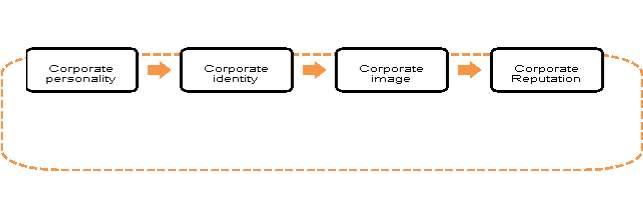
The building blocks of corporate reputation model in figure 2 shows how corporate reputation is built and will be discussed to assess Amazon’s strength.
5.1 – CORPORATE PERSONALITY
Brand personality is defined as “the set of human characteristics associated with a brand” (Aaker, 1997, p.347). The personality of Amazon’s brand is reliant on the opt-in of its employees and internal brand building (Vallaster and de Chernatony, 2006).
As Amazon wants to be seen as a trusted online retailer, it states on its website (see figure 22, AP1), a range of values that it believes its employees should follow in order for its consumers to trust the brand. For example: earn trust, customer obsession and think big. The CEO communicates these values from the top-down. Although some of these values are appropriate, the value regarding trust however could be questioned, as the way that Amazon treats its employees is not aligned with its values. As figure 7 (AP1) (Schein, 1985) shows, Amazon will struggle to engage its staff if it does not change its culture (Balmer and Greyser, 2006).
Personality leads onto the identity of the organisation and what the managers think of the brand internally, which is then communicated externally to the public and stakeholders through brand image and reputation.
5.2 – CORPORATE IDENTITY
Melewar and Karaosmanoglu (2006) believe that an organisation with a strong identity can motivate employees, therefore should reflect the CEO’s values throughout the brand (Charan and Colvin, 2000). Figure 17 (AP1) outlines Amazon’s identity using Kapferer’s Identity Prism (1986).
In terms of Amazon’s physique, its dominant orange and black branding is recognisable by consumers, as well as its well-known smile logo, which portrays a friendly, reliable and down to earth personality within the organisation. However, due to recent press surrounding its employee’s welfare, it could be questioned as to whether Amazon’s identity is not as strong as they desire, which could in turn affect its trustworthiness as a brand.
In order to strengthen its identity, Amazon need to align its employee’s behaviour with the values of the organisation, in order for them to live the brand (Temporal, 2014). Therefore, require the need for brand essence (figure 16, AP1) as “the glue” to hold the core identity together (Aaker and Joachimsthaler, 2000, p.45)
Brand identity is sent via signals, such as employees, to the receiver creating a brand image (see figure 3). Therefore, it is vital that Amazon employees are spreading positive messages to the consumers, which is effectively down to Amazon as an organisation to control and monitor.

Figure 3 – Identity and Image
5.3 – CORPORATE IMAGE
The corporate image of a brand is “what people are saying about the company and what the company is saying about itself” (Dowling, 1993).
The brand image of an organisation is the most effective way to communicate with consumers, which in turn reveals how significant brand identity is (Kapferer, 2000). If there is a gap between a corporate brand’s identity and image, it can cause damage to its reputation (Roper and Fill, 2012).
The image can be categorised into intangible and tangible components (Harris and de Chernatony, 2001). Its intangible components are: its brand equity, reputation and patents. Whereas, its tangible components are factors like: buildings, employees etc.
Although Amazon’s brand image has been damaged due to its employees being mistreated, as well as avoiding paying tax, Amazon is still a global market leader in the e-commerce world (Mintel, 2015) and is one of the primary Internet brands that are favoured by women with a 65.7% impression score between Feb 2016 and Jan 2017 (Brand Index, 2017); showing how consumers still favour the brand.
5.4 – CORPORATE REPUTATION
Figure 2 shows how personality plus identity and image leads to the reputation of Amazon.Amazon’s reputation can be measured in many ways such as the RepTrak system (Reputation Institute, 2006) as well as through brand equity, see figure 9 (AP1) for Keller’s Brand Equity pyramid. However, the corporate character scale model (Davies et al, 2004) in figure 8 (AP1) has been analysed, in order to understand Amazon in terms of its human characteristics. The traits on the scale are “words that are commonly used by an organization” (Davies et al, 2004, p.140).
The biggest gap that has been outlined on the scale is Machismo, whereby Amazon thinks that its brand is more masculine and brave than it actually appears to external stakeholders. It could be interpreted that Amazon is masculine and want to be a key player, but have shown that it has avoided paying tax as an organisation, which could in turn affect its masculinity (The Guardian, 2015b).
An advantage of the corporate character scale model is that it is also able to measure brands in the not-for-profit sector (Roper and Fill, 2012). However, an adversity of the model is that Amazon could be strong in one of the dimensions on the scale but not the other, for example: strong in agreeableness, but not social responsibility, showing a false representation of its brand.
If there are substantial gaps in the way in which Amazon’s internal and external stakeholders perceive its brand, then a future crisis could occur (Dowling, 1994). This could damage the brand as “once a reputation is created, the perception may be difficult to change in the minds of stakeholders and the public.” (Cravens and Oliver, 2006, p.294).
6.0 – DEVELOPMENT OF AMAZON’S CORPORATE REPUTATION MANAGEMENT PROCESS AND RECOMMENDATIONS
A corporate reputation management process can be defined as a process that follows a set of guidelines in order for reputational efficiencies, with the main objective of strategic alignment (Knipp, 2009). Corporate reputation management usually involves employees and their perceptions towards the brand (Stuart, 1999) as well as additional stakeholders (Bromley, 1993).
Developing Amazon’s corporate reputation management process has many advantages. Firstly, an advantage is the focus on satisfied employees (Cravens and Oliver, 2006). If Amazon employees recognise that the organisation has a strong reputation, then they will feel proud to work for them. As a result of this, if employees are satisfied, then it will lead to satisfied customers, then sales and loyalty (Ahmed and Rafiq, 2002). However, it is important to acknowledge that corporate reputation management processes also have drawbacks, for example: being a time-consuming process that does not happen overnight, as well as involving the need for money.
As a result of an array of internal and external influences, Amazon needs to monitor its corporate reputation and develop the process for future, as it can be affected by contact with another stakeholder (Post and Griffin, 1997). This could in turn affect economic returns (Fombrun, 1996).
6.1 – EXTERNAL INFLUENCES
Figure 1 (AP1) outlines how factors externally are having an impact on brands like Amazon. An external influence that could have an impact on Amazon’s reputation is the increase in cybercrime, which could threaten Amazon’s business and the customer experience online (The Guardian, 2016a). This factor could suggest why Amazon dropped from ninth to tenth place on the international Brand Index list in 2016 (Brand Index, 2016).
6.2 – EXTERNAL RECOMMENDATIONS
It is important that Amazon prevents these external influences from damaging its reputation and the strong image that is in the consumer’s minds.
The PESTEL analysis outlines the rising interest in the environment and sustainability (The Guardian, 2013), therefore strategies such as Corporate Social Responsibility (CSR) could contribute to satisfying consumer’s interest and influence corporate reputation positively if this is communicated. Kapoor (2011) states how organisations that are sustainable gain competitive advantage.
Amazon currently undertakes some aspects of CSR, to create positive images in the stakeholder’s minds (Kotler and Lee, 2005). An example of this is how recently Amazon has built three spheres in Seattle, which consist of 400-species of plants, with the aim of providing employees with different workspaces. Alongside this, Amazon will donate $10,000 to improve local school’s greenhouse and environment education programs (Daily Mail, 2017), showing its desire to help the community. These are communicated using organisational communications; involving all stakeholders that Amazon has a relationship with (Abratt and Kleyn, 2012).
However, in order to ensure that its reputation does not get damaged, Amazon needs to undertake crisis management, as crises that have not been accounted for can last twice as long as those that have been (Fink, 2000). Corporate communication is needed here to bring in the CEO to talk about the crisis, in order to build the trust back up and begin to strengthen its reputation.
As the stakeholder matrix in figure 15 (AP1) displays, Amazon’s suppliers and customers have low power and high interest, therefore if Amazon manages its brand externally, these stakeholders will be satisfied.
6.3 – INTERNAL INFLUENCES
In addition to external influences on the brand’s reputation, there are also internal influences that can damage the global brand. Amazon recently had a few scandals in the press that may have had a negative impact on the public’s perceptions, these being the tax avoidance scandal and the employee scandal.
As the stakeholder matrix in figure 15 (AP1) shows, Amazon’s employees have low power and low interest in the brand, instead of having high interest, as a result of the way that they are treated. Therefore if Amazon manages its brand internally, it will lead to its employees having more interest and wanting to spread positive feelings and images about the brand, which will in turn strengthen its corporate reputation.
6.4 – INTERNAL RECOMMENDATIONS
Although Amazon has made internal efforts to improve its employee’s working environments to increase satisfaction, such as building domes in Seattle (Daily Mail, 2017), this does not incorporate all of the countries within the Amazon brand, therefore leaving employees in other countries unsatisfied with their employer, with the possibility of speaking negatively of the organisation.
This shows that there is a gap between Amazon’s vision and culture, as a result of its employees being treated differently to its desired values and culture (see figure 11, AP1) (Hatch and Schultz, 2008), therefore are not buying into the approach from the manager (Hatch and Schultz, 2001). Hatch and Schultz (2001) believe that the vision, image and culture of the corporate brand should be thought of as pieces of a jigsaw, with any gaps representing an incomplete jigsaw or brand. Therefore, Amazon needs to undertake processes to close the gap, by involving the CEO (mentioned in table 1) to strengthen the Amazon brand, and close the gap between vision and culture, by building the brand internally to increase brand equity (Urde, 2003).
Therefore, it would be recommended that Amazon undertake internal branding and marketing to incorporate all employees. Amazon should undertake management communications to address the fulfilment of its objectives, through internal communication of its mission and vision (Melewar and Karaosmanoglu, 2006). Addressing its internal audiences through communication techniques will be effective for the employees to buy into the organisation’s vision, goals and strategies, to in turn create brand ambassadors (Thomson and Hecker, 2000), and become “walking representatives” of the brand (Kotler et al, 2009, p452).
6.5 – INTERNAL BRANDING
The process of internal branding will be effective in strengthening Amazon’s corporate reputation as it will align its internal processes and culture with those of the brand and that Jeffrey Bezos communicates (Vallaster, 2004). Research shows that successful internal branding leads to increased employee commitment and loyalty to the brand (Papasolomou and Vrontis, 2006), which will then be communicated externally to consumers. Grönroos (1981) believes that treating employees as internal customers increases their satisfaction levels and develops more customer-conscious employees, which in turn leads to external satisfaction.
Internal marketing is the instrument that Amazon should use within internal branding (Punjaisri and Wilson, 2007). Amazon needs to create a professional branding campaign that involves all employees and portrays the organisation’s corporate messages and values, to improve employee morale and satisfaction.
The campaign should be voiced by the CEO at the top of the organisation and passed throughout the global hierarchy.
6.5.1 – INTRANET
Firstly, Amazon should create an intranet for all employees, in order to enhance its employee’s collaboration and productivity (Wachter and Gupta, 1997). The intranet could include everything from upcoming events, important documents, as well as the outstanding employees of the month in each country. This would begin to make its employees feel valued by their employers (Cable and Turban, 2003), as well as begin to comprehend the values and messages that Amazon want to portray to its external customers.
This would cost a large amount of money for Amazon to build and implement, however, in the long run, employees would be satisfied and aligned with the brand.
6.5.2 – INTERNAL NEWSLETTER
Alternatively, Amazon could communicate with its employees by creating a monthly internal newsletter for each country (Cornelissen, 2004), including seasonal staff and contractors. The internal newsletter could include a variety of different content that would interest its employees as well as reiterating its corporate values, and portraying the brand’s culture (Welch and Jackson, 2007). For example: company news, industry news, product updates and employee generated content to encourage employee’s involvement. It would also be effective if the CEO Jeffrey Bezos included some motivational quotes to encourage the employees within the organisation. (See AP2 for a mock internal newsletter).
Many authors state that it is the responsibility of the employees to protect and enhance a brand’s reputation (Schneider and Bowen; 1985, Saxton, 1998) as they have a powerful impact on consumer’s perceptions of both the brand and the organisation. This justifies as to why Amazon need to develop their corporate reputation management process.
As a result of building the brand internally, customer loyalty is likely to increase due to employees satisfying customer’s needs and creating strong perceptions of the corporate reputation (Nguyen and LeBlanc, 2001). Therefore, Amazon needs to ensure that the brand promise is kept within its employees (Argenti and Druckenmiller, 2004).
7.0 – CONCLUSION
To conclude, Amazon is a very strong corporate brand, with strong product brands as a result of its hybrid brand structure. However, Amazon must not become complacent and must constantly be looking for processes to improve its reputation, due to inevitable internal and external influences.
Amazon must be respectful of its employees and ensure that all employees clearly understand Amazon’s values and vision by focusing on its culture, to ensure a strong corporate reputation.
REFERENCES
Aaker, J.L. 1997. Dimensions of brand personality. Journal of Marketing Research. Vol. 24.
Aaker, D.A. and Joachimsthaler, E. 2000. The brand relationship spectrum: The key to the brand architecture challenge. California management review, 42(4), pp.8-23.
Aaker, D.A. 2009. Brand portfolio strategy: Creating relevance, differentiation, energy, leverage, and clarity. Simon and Schuster.
Abratt, R. and Kleyn, N. 2012. Corporate identity, corporate branding and corporate reputations: Reconciliation and integration. European Journal of Marketing, 46(7/8), pp.1048-1063.
Ahmed, P.K. and Rafiq, M. 2002. Internal Marketing. Tools and concepts for customer-focused management. GB: Butterworth Heinemann.
Amazon, 2017. [online]. Available via: www.amazon.com. (Accessed on: 13/01/2017).
Amazon Ads, 2017. [online]. Available via: https://www.amazon.co.uk/adprefs (Accessed on 04/05/2017).
Amazon Jobs, 2017. [online]. Available via: https://www.amazon.jobs/principles (Accessed on 04/05/2017).
Argenti, P., and Druckenmiller, B. 2004. Reputation and the corporate brand. Corporate Reputation Review, 6(4), 368–374.
Balmer, J.M.T. 2001. The three virtues and seven deadly sins of corporate branding. Journal of General Management, Vol. 27 No. 1, pp. 1‐17.
Balmer, J.M.T. and Gray, E.R. 2003. Corporate brands: what are they? What of them? European journal of marketing, 37(7/8), pp.972-997.
Balmer, J.M.T. and Greyser, S.A. 2006. Corporate marketing: Integrating corporate identity, corporate branding, corporate communications, corporate image and corporate reputation. European journal of marketing, 40(7/8), pp.730-741.
BBC, 2013. [online]. Available via: http://www.bbc.co.uk/news/magazine-20560359 (Accessed on 28/04/2017).
BBC, 2015. [online]. Available via: http://www.bbc.co.uk/news/business-32824770 (Accessed on 04/02/2017).
Bowen, D.E. and Schneider, B. 1985. Boundary-spanning-role employees and the service encounter: Some guidelines for management and research. The service encounter, 127, p.148.
Brand Index, 2016. [online]. Available via: http://www.brandindex.com/ranking/2016-annual (Accessed on 04/05/17).
Brand Index, 2017. [online]. Available via: http://www.brandindex.com/article/womens-perception-brands (Accessed on 04/05/17).
Bromley, D. B. 1993. Reputation, Image and Impression Management. Chichester: John Wiley.
Business Insider, 2017. [online]. Available via: http://uk.businessinsider.com/british-consumer-spending-gdp-economy-2017-3 (Accessed on 04/04/2017).
Cable, D.M. and Turban, D.B. 2003. The value of organizational reputation in the recruitment context: A brand‐equity perspective. Journal of Applied Social Psychology, 33(11), pp.2244-2266.
Car Keys, 2017. [online]. Available via: https://www.carkeys.co.uk/news/amazon-considering-driverless-cars-to-deliver-your-packages (Accessed on 02/05/2017).
Charan, R. and Colvin, G. 2000. The Right Fit Most boards handle CEO succession poorly. Fortune-European Edition. 141(8), pp.94-102.
Cornelissen, J. 2004. Corporate Communications Theory and Practice, Sage, London.
Cravens, K.S. and Oliver, E.G. 2006. Employees: The key link to corporate reputation management. Business Horizons, 49(4), pp.293-302.
Daily Mail, 2016. [online]. Available via: http://www.dailymail.co.uk/news/article-3997864/Amazombies-Seven-seconds-item-filmed-blistering-12-hours-shifts-timed-toilet-breaks-Christmas-order-does-worker-elves.html (Accessed on 12/02/2017).
Daily Mail, 2017. [online]. Available via: http://www.dailymail.co.uk/news/article-4479202/Amazon-unveils-Spheres-horticulture-domes-Seattle.html (Accessed on 06/05/2017).
Davies, G., Chun, R., da Silva, R.V. and Roper, S. 2004. A corporate character scale to assess employee and customer views of organization reputation. Corporate reputation review, 7(2), pp.125-146.
Douglas, S.P., Craig, C.S. and Nijssen, E.J. 2001. Integrating Branding Strategy across Markets: Building International Brand Architecture. Journal of International Marketing, 9(2), pp.97–114.
Dowling G R. 1993. Developing your company image into a corporate asset. Long Range Planning, 26, 2, 101-109.
Fink, S. 2000. Crisis Management Planning for the Inevitable, AMACOM, New York.
Fombrun, C. 1996. Reputation. John Wiley & Sons, Ltd.
Franzen, G. 2009. Brand portfolio and brand architecture strategies. Amsterdam: SWOCC.
Gad, T. 2001. 4‐D Branding, Financial Times Prentice Hall, London.
Giles, A. 2017. The future of retailing…never mind the quality, feel the personalisation. Market Leader, Q2, pp. 40-43.
Grönroos, C. 1981. Internal marketing–an integral part of marketing theory. Marketing of services, 236, p.238.
Harris, F. and de Chernatony, L. 2001. Corporate branding and corporate brand performance. European Journal of marketing, 35(3/4), pp.441-456.
Hatch, M. J. and Schultz, M. 2001. Are the strategic stars aligned for your corporate brand. Harvard Business Review, February 2001.
Hatch, M.J. and Schultz, M. 2008. Taking Brand Initiative. How companies can align strategy Culture and Identity through corporate branding. San Francisco. Jossey-Bass.
Hestad, M. 2013. Branding and Product Design, Taylor and Francis, Abingdon.
Hsu, L., Fournier, S. and Srinivasan, S. 2016. Brand architecture strategy and firm value: how leveraging, separating, and distancing the corporate brand affects risk and returns. Academy of Marketing Science. Journal, 44(2), pp.261–280.
Jobber, D. 2010. Principles and Practices of Marketing. McGraw-Hill.
Kapferer, J.N. 1986. Beyond positioning, retailer’s identity. Esomar Seminar Proceedings, Brussels, Vol. 4/6, pp. 167-176.
Kapferer, J.N. 2000. Strategic Brand Management – Creating and Sustaining Brand Equity, Long Term, Kogan Page Publishers, 1st Edition, London.
Kapferer, J.N. 2003. Do brand personality scales really measure brand personality? The Journal of Brand Management, 11(2), pp.143–155.
Kapoor, A.K.C. 2011. Branding and Sustainable Competitive Advantage, IGI Global, Hershey.
Keller, K.L. 2013. Strategic brand management [electronic resource] : building, measuring, and managing brand equity 4th ed., Global., Boston, [Mass.] ; London: Pearson.
Keller, K.L., Parameswaran, M.G. and Jacob, I. 2011. Strategic brand management: Building, measuring, and managing brand equity. Pearson Education India.
KeyNote, 2016. [online]. E-Commerce: The Internet Grocery Market. Market Report. (Accessed on 06/05/2017).
Knipp, V.A. 2009. Trust the Brand-Corporate Reputation Management in Private Banking. Diplomica Verlag.
Kotler, P. and Lee, N. 2005. Corporate social responsibility. Hoboken.
Kotler, P. 2008. Principles of marketing (5th European ed). Harlow: Financial Times Prentice Hall.
Kotler, P., Keller, K. L., Brady, M., Goodman, M. and Hansen, T. 2009. Marketing Management. Pearson Education Limited, Essex.
Landor Breakaway brands, 2011. [online]. Available via: www.landor.com (Accessed on 04/05/2017).
McDonald, M., de Chernatony, L. and Harris, F. 2001. Corporate marketing and service brands – moving beyond the fast‐moving consumer goods model. European Journal of Marketing, Vol. 35 Nos 3/4, pp. 335‐46.
Melewar, T.C. and Karaosmanoglu, E. 2006. Seven dimensions of corporate identity: a categorisation from the practitioners’ perspectives. European Journal of Marketing, 40, 7/8, 846-869.
Mendelow, A. 1991. Stakeholder mapping. In: Proceedings of the 2nd International Conference on Information Systems.
Mintel, 2015. Online Retailing. Available via: Mintel. (Accessed 17/01/17).
Mintel, 2017. [online]. Market Report. Online Grocery Retailing UK.
Morgan, N.A. and Rego, L.L. 2009. Brand portfolio strategy and firm performance. Journal of Marketing, Vol. 73 No. 1, pp. 59-74.
Muzellec, L. and Lambkin, M.C. 2009. Corporate branding and brand architecture: a conceptual framework. Marketing Theory, 9(1), pp.39–54.
Nguyen, N. and Leblanc, G. 2001. Corporate image and corporate reputation in customers’ retention decisions in services. Journal of retailing and Consumer Services, 8(4), pp.227-236.
Papasolomou, I. and Vrontis, D. 2006. Using internal marketing to ignite the corporate brand: The case of the UK retail bank industry. Journal of Brand Management, Vol. 14, No. 1/2 , pp. 177 – 195.
Phoenix Corporate, 2016. [online] Available via: http://phx.corporate-ir.net/phoenix (Accessed on 16/03/2017).
Phoenix Corporate, 2017. [online]. Available via: http://phx.corporate-ir.net/phoenix.zhtml?c=97664&p=irol-reportsannual (Accessed on 05/04/2017).
Punjaisri, K. and Wilson, A. 2007. The role of internal branding in the delivery of employee brand promise. Journal of Brand Management, 15(1), pp.57-70.
Porter, M.E. 1979. How competitive forces shape strategy. Harvard Business Review.
Post, J.E. and Griffin, J.J. 1997. Corporate reputation and external affairs management. Corporate Reputation Review, Vol. 1 Nos 1/2, pp. 165‐71.
Reputation Institute, 2006. [online]. Available via: https://www.reputationinstitute.com/reptrak-framework.aspx (Accessed on 05/05/2017).
Rao, V.R., Agarwal, M.K. and Dahlhoff, D. 2004. How is manifest branding strategy related to the intangible value of a corporation? Journal of Marketing, Vol. 68 No. 4, pp. 126-140.
Roper, S. and Fill, C. 2012. Corporate reputation, brand and communication. Pearson Higher Ed.
Saxton, K. 1998. Where do reputations come from? Corporate Reputation Review, Vol. 1 No. 4, pp. 393‐9.
SC Magazine, 2017. [online]. Available via: https://www.scmagazine.com/hackers-compromise-third-party-vendor-amazon-accounts/article/649665/ (Accessed on 05/05/2017).
Schein, E. H. 1985. Organizational Culture and Leadership (1st ed.). San Francisco:Jossey-Bass.
Stuart, H. 1999. Towards a definitive model of the corporate identity management process. Corporate Communications: An International Journal, Vol. 4 No. 4, pp. 200‐07.
Temporal, P. 2014. Branding for the Public Sector: Creating, Building and Managing Brands People Will Value. John Wiley & Sons.
The Guardian, 2005. [online]. Available via: https://www.theguardian.com/technology/2005/apr/19/business.marksspencer (Accessed on 04/04/2017).
The Guardian, 2013. [online]. Available via: https://www.theguardian.com/sustainable-business/blog/rise-generation-y-sustainable-marketplace Accessed on (03/03/2017).
The Guardian, 2015a. [online]. Available via: https://www.theguardian.com/women-in-leadership/2015/apr/02/the-rise-of-the-conscious-consumer-why-businesses-need-to-open-up (Accessed on 15/04/2017).
The Guardian, 2015b. [online]. Available via: https://www.theguardian.com/technology/2015/jun/24/amazons-uk-business-paid-119m-tax-last-year (Accessed on 18/04/2017).
The Guardian, 2016a. [online]. Available via: https://www.theguardian.com/technology/2016/feb/25/cybercrime-uk-businesses-battling-huge-rise-silver-fraudsters (Accessed on 11/04/2017).
The Guardian, 2016b. [online]. Available via: https://www.theguardian.com/technology/2016/jun/09/amazon-starts-uk-fresh-food-delivery (Accessed on 25/04/2017).
The Guardian, 2017. [online]. Available via: The Guardian, 2017 – https://www.theguardian.com/world/2017/jan/11/india-amazon-flag-doormats-canada (Accessed on 04/05/2017).
The Independent, 2016. [online]. Available via: http://www.independent.co.uk/news/uk/home-news/amazon-workers-sleep-tents-dunfermline-fife-scotland-a7467657.html (Accessed on 22/04/2017).
The Telegraph, 2015. [online]. Available via: http://www.telegraph.co.uk/finance/newsbysector/retailandconsumer/11657830/Online-shopping-to-grow-by-320bn-in-three-years.html (Accessed on 29/02/2017).
The Telegraph, 2016. [online]. Available via: http://www.telegraph.co.uk/business/2016/06/09/amazon-fresh-launches-assault-on-uk-supermarkets/ (Accessed on 29/02/2017).
The Telegraph, 2017. [online]. Available via: http://www.telegraph.co.uk/news/0/what-would-brexit-mean-for-british-trade/ (Accessed on 11/04/2017).
Thomson, K. and Hecker, L.A. 2000. The business value of buy-in: How staff understanding and commitment impact on brand and business performance. Internal Marketing: Directions for Management’, Routledge, London, pp.160-172.
Urde, M. 2003. Core value-based corporate brand building. European Journal of marketing, 37(7/8), pp.1017-1040.
Vallaster, C. 2004. Internal brand building in multicultural organisations: A roadmap towards action research. Qualitative Market Research: An International Journal, Vol. 7, No. 2. pp. 100 – 113 .
Vallaster, C. and de Chernatony, L. 2006. Internal brand building and structuration: the role of leadership. European Journal of Marketing, 40(7/8), pp.761-784.
Wachter, R. and J. Gupta. 1997. The Establishment and Management of Corporate Intranets. International Journal of Information Management. 17, 393–404.
Waterman, R. H., Peters, T. J., & Phillips, J. R. 1980. Structure is not organization. Business Horizons, 23(3), 14-26.
Welch, M. and Jackson, P.R. 2007. Rethinking internal communication: a stakeholder approach. Corporate Communications: An International Journal, 12(2), pp.177-198.
YouGov, 2016. [online]. Available via: https://yougov.co.uk/find-solutions/profiles/ (Accessed on: 08/04/2017).
APPENDICES
Appendix 1 (AP1)
External
Figure 1- Macro Analysis – PESTEL Analysis
| PESTEL | POINT | IMPLICATION | O/T |
| Political | Brexit – imports and exports | Export sales by UK-based businesses on Amazon Marketplace set to grow more than a quarter in 2016 to surpass £1.8 billion. (Phoenix Corporate, 2016) However, will be higher tariffs and taxes to pay when importing and exporting to countries in the EU (The Telegraph, 2017). | T |
| Economic | Brexit – spending | Brits are beginning to be conscious of their spending as a result of the economy (Business Insider, 2017). | T |
| Social | Increasing wealth disparity
Increasing consumerism |
Increasing gap between the rich and the poor in many countries threatens Amazon (BBC, 2015). In terms of the potential stagnation of disposable income levels, a higher disposal income level is more favourable in increasing revenues of Amazon.
Higher consumerism in developing markets increases Amazon’s growth potential as the company looks to expand its global online retail operations in these locations (The Guardian, 2015a). In relation, the company stands to benefit from increasing online buying habits, as more people around the world gain access to the Internet. |
T
O |
| Technological | Increasing cybercrime threat
Increase in driving technology – driverless cars |
This threatens consumer experience as well as the integrity of Amazon’s business. Therefore, significant investment in appropriate technological measures is critical to the company’s long-term survival despite technology-related issues in the firm’s remote or macro-environment. (The Guardian, 2016a).
Amazon to consider driverless cars for deliveries of products. (Car Keys, 2017) |
T
O |
| Environmental | Rising business interest in environmental and sustainability (The Guardian, 2013). | Amazon had opportunities to improve its environmental impact in response to the rising interest in environmental programs and sustainability. For example, an improvement in Amazon’s CSR strategy could significantly contribute to satisfying such interest. | O |
Figure 2 – SWOT Analysis
| Strengths | Weaknesses |
| CRM and IT support Amazon’s business strategy. Amazon documents their customer’s data in terms of behaviour, in order to personalise offers, based upon previous preferences and purchases.
Amazon is the world’s leading online retailer and develops its strengths from a three-pronged strategic thrust on cost leadership, differentiation, and focus. This in turn has resulted in Amazon reaping the gains from this course of action and has helped its shareholders derive value from the company. Amazon has a low cost structure – they have the largest merchandise selection and a huge number of third party sellers. |
Bad Public Relations:
|
| Opportunities | Threats |
| Amazon cashing in on its credentials as an online retail pioneer by selling its expertise to major store groups. E.g. British retailer Marks and Spencer announced a joint venture with Amazon to sell its products and service online (The Guardian, 2005). Other recent collaborations have been with Target.
High online sales as a result of consumers shopping online (The Telegraph, 2015) |
Brand competition – iPads and Kindle
Data breaches (SC Magazine, 2017) Poor publicity -PR backlash – reputation |
MICRO ANALYSIS
Figure 3 – Porter’s 5 Forces (Porter, 1979)
| Threat of new entrants | Low – the high cost of brand development in online retail weakens the influence of new entrants on the performance of Amazon. |
| Threat of substitutes | High – low switching costs and high availability show that customers can easily transfer from Amazon to competitors |
| Rivalry among competitors | High – highly competitive market with high aggressiveness of firms such as Wal-Mart. There is a high availability of substitutes and low switching costs meaning competitors are easily accessible |
| Bargaining power of suppliers | Medium – Small population of suppliers empowers suppliers to impose a strong force on Amazon’s e-commerce business. Moderate forward integration brings about a moderate degree of control that suppliers have in the sale of their products to firms like Amazon. Moderate size of suppliers limits influence on Amazon |
| Bargaining power of buyers | High – Access to high quality of information, low switching costs make it easy for consumers to transfer from Amazon to other competitors and high availability of substitutes further empowers consumers to shift from one retailer to another |
INTERNAL ANALYSIS
Figure 4 – McKinsey 7S Model (Waterman, Peters and Phillips, 1980)
| Strategy | Third party sellers are encouraged to sell on the Amazon marketplace. This increases the catalogue and choice of products available to the customers. |
| Structure | Vertical hierarchy – CEO at the top, instructing to the bottom |
| Style | Leadership Principles: customer obsession, ownership, invent and simplify, hire and develop the best, insist on the highest standards, think big, bias for action, frugality, learn and be curious, earn trust, dive deep, have backbone; disagree and commit, deliver results. |
| Staff | Link to CSR gaps in evidence to claims. Underpaid employees |
| Skills | Employees are ‘Dehumanised’ – made to work at a fast pace to get the job done |
| Systems | Fast paced environment
Long shifts Decisions communicated from the top down |
| Shared Values | Customer focus, innovation |
Figure 5 – Resource Based View – corporate brand
| Performance results | Net sales in billions have increased over the years. $88,988bn in 2014, $107,006 in 2015 and $135,987 in 2016 (Phoenix Corporate, 2017) |
| Competitive Advantage | Major global online retailer |
| Organisational Resources | Financial assets – $136.0 billion in 2016 compared to $107.0 billion in 2015 (Phoenix, Corporate, 2017)
Staff, Human resources – 341,000 employees (Phoenix Corporate, 2017) Physical assets – Warehouses, customer database Intangible assets – brand image |
| Organisational Capabilities | Online retailing – convenience |
| Core Competences | Brand popularity
Fast delivery |
 Figure 6 – Brand Architecture
Figure 6 – Brand Architecture
 Figure 7 – Cultural Iceberg (Schein, 1985)
Figure 7 – Cultural Iceberg (Schein, 1985)
| Stated | Actual | Explanation | |
| Enterprise | 6 | 5 | Their enterprising is clear to consumers. They are innovative and daring. |
| Agreeableness | 5 | 2 | Say they’re socially responsible but they’re not as much as they say they are. However, they are honest. |
| Chic | 4 | 3 | Not very stylish or exclusive. |
| Machismo | 5 | 1 | Has the biggest gap – not as machismo/tough as they make out they are. |
| Competence | 5 | 4 | They are reliable. |
| Ruthlessness | 5 | 3 | Amazon are not as ruthless as they make out they are. They are not arrogant. |
| Informality | 6 | 5 | Their informality is clear to consumers. They are an easy-going brand. |
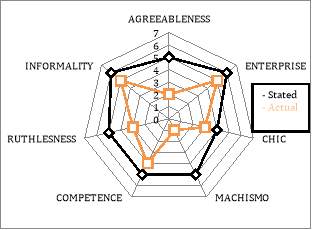
Figure 8 – Corporate character scale (Davies et al, 2004)
Figure 9 – Keller’s Brand Equity Pyramid (Keller et al, 2011)

| Resonance | -Loyal customers tend to make regular and repeat
purchases – Amazon are the first online retailer people think about |
| Judgments
Feeling |
– The quality of the products are good
– Amazon care about their customers -Cheerful -Innovative (The 50 most innovative companies, 2011) |
| Performance
Imagery |
-Price – low, competitive
-Target the online shopper -Wants to be perceived as convenient, quick, efficient |
| Salience | -Online retailer – sales of books, electronics etc.
-Leader – superpower brand in US and UK |
| CSR Policies | Evidence |
| – Amazon contribute to communities where employees and customers live
-Compensation and benefits for employees in Fulfilment Centres. -Hire and Develop the Best – Leadership policy “every employee plays a key role, and we’re committed to treating them with dignity and respect” |
> worked with Magic Breakfast to pick schools close to Amazon locations. Now support 57 schools, reaching over 3,800 children a day in the local communities.
> permanent employees start on £7.35 an hour or above. This increases over their first two years of employment when all employees earn £8.15 an hour and above. Benefits packages for permanent employees. > gaps in evidence. “Working in Amazon” employee case studies on the website, however not supported by recent events. > social media backlash when NY times published an article exposing Amazon after interviewing 100 (ex/existing) employees. > Donation of $10,000 for improvements to schools’ greenhouse and environmental education programs (Daily Mail, 2017) |
Figure 10 – Corporate Social Responsibility
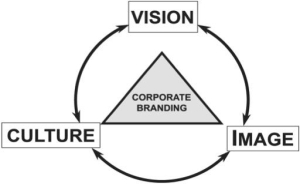
Figure 11 – Vision Culture Image alignment Model (Hatch and Schultz, 2008)
| Vision | Top management’s aspirations for the company
“Our vision is to be earth’s most customer centric company; to build a place where people can come to find and discover anything they might want to buy online.”
|
| Culture | Leadership, customer obsession, results driven (Amazon Jobs, 2017). |
| Image | Stakeholders see Amazon as a popular e-commerce brand, convenient |
| GAP | Vision-culture gap. Employees are not inspired by the vision of the organisation due to minimum wage and dehumanisation. |
Figure 12 – Market Segmentation (Jobber, 2010, based on YouGov report, 2016)
| Demographic | Age – any age
Gender – male or female Social class – ABC1 |
| Psychographic | Interests – technology, shopping, reading
Lifestyle – on the go, busy |
| Behavioural | Purchase occasion – frequent shopper
Benefits sought – convenience Loyalty – loyal customer but can switch dependent upon price |
Figure 13 – STP – Positioning (Jobber, 2010)

Figure 14 – Marketing Mix

| Product | Online retailing – books, electronic devices, food, etc. |
| Promotion | Retargeting
TV adverts Search engine marketing |
| Price | Medium price
Discounts Competitive |
| Place | Online
Offline warehouses |
Figure 15 – Stakeholder matrix (Mendelow, 1991)
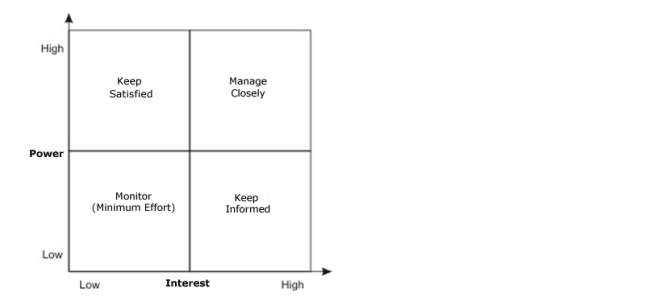
Figure 16 – Branding Triangle

| 1. Brand essence | Innovative, convenient, passionate |
| 2. Brand personality | Popular, appealing, reliable |
| 3. Emotional Benefits | Fulfilment, satisfaction |
| 4. Functional Benefits | High quality products, fast delivery, good communication |
| 5. Brand Attributes | Personal, diverse |
Figure 17 – Kapferer’s Identity Prism (1986)
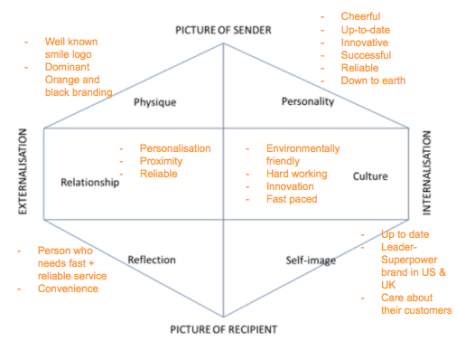
Figure 18 – 5 Dimensions of Brand personality (Aaker, 1997)
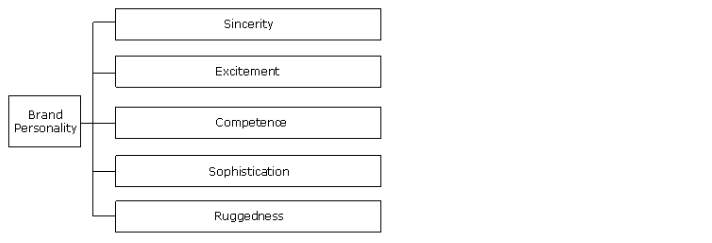
Figure 19 – Building blocks of corporate reputation

Figure 20 – Product brand
Figure 21 – Competitors and values
AMAZON FRESH
Background
Launched in June 2016 in the UK (The Guardian, 2016b). Been in the US for 7 years.
Values
Convenience
Fresh
Trends
Ultra convenience
Online consumer
Reputation
Fairly new idea
Innovative
Competitive
| Company | Values |
| Amazon | Customer obsession, ownership, invent and simplify, Are right a lot, Learn and be curious, Hire and develop the best, Insist on the highest standards, Think big, Bias for action, Frugality, Earn trust, Dive deep, Have Backbone; Disagree and Commit, Deliver results (Amazon Jobs, 2017) |
| E-bay | Convenient, Cheap, Make a difference in the world |
| Wal-Mart | Respectful, Customer service, Strive for excellence |
Figure 22 – Product layers (Kotler, 2008)
| Layer | Description |
| Core | Online groceries delivered to the door |
| Actual | Fresh produce, 130,000 fresh products (The Telegraph, 2016). |
| Augmented | Same day delivery, no minimum order price. One hour time slots |
Appendix 2 (AP2)
Figure 1 – Mock Internal Newsletter


Cite This Work
To export a reference to this article please select a referencing stye below:
Related Services
View allRelated Content
All TagsContent relating to: "Advertising"
Advertising is a way of promoting products or services, and communicating a message to potential customers. There are many different forms of advertisements, including posters, billboards, leaflets, newspaper ads, online ads, radio and television ads, and many more.
Related Articles
DMCA / Removal Request
If you are the original writer of this dissertation and no longer wish to have your work published on the UKDiss.com website then please:




